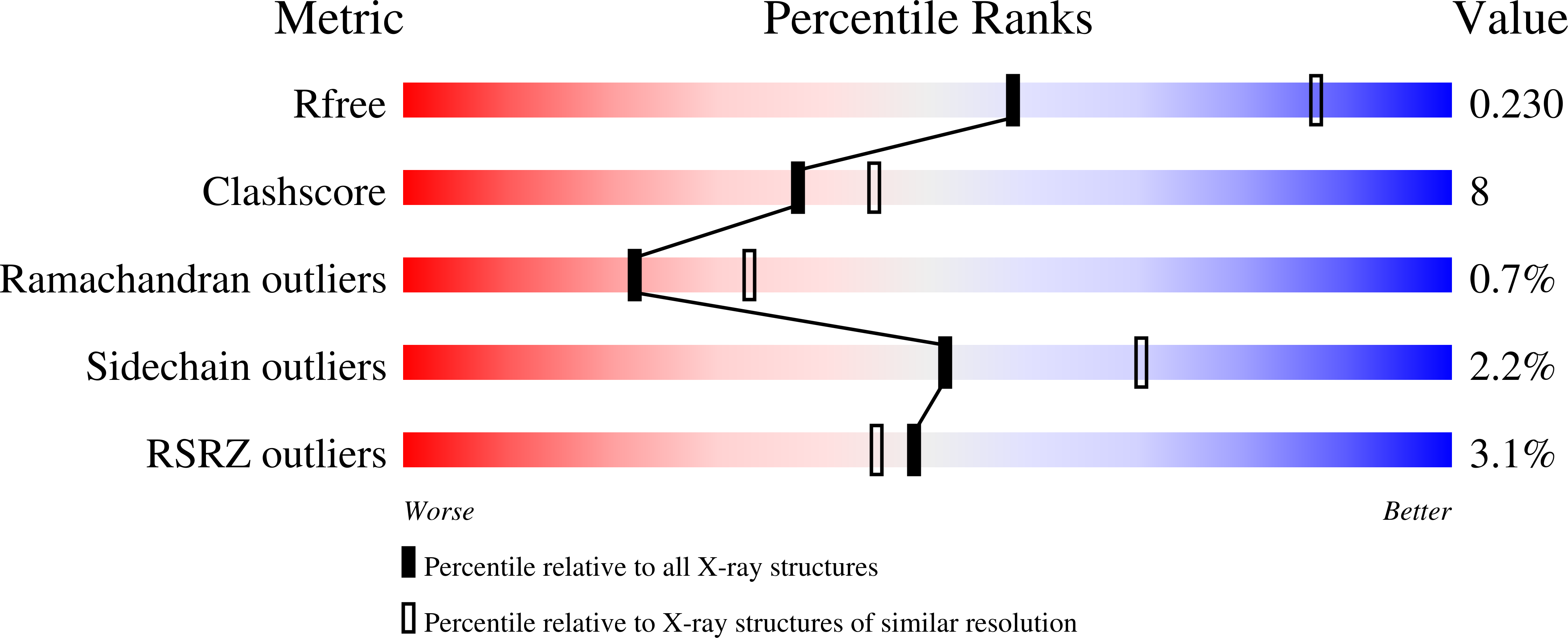Structural Basis for Error-Free Bypass of the 5-N-Methylformamidopyrimidine-dG Lesion by Human DNA Polymerase eta and Sulfolobus solfataricus P2 Polymerase IV.
Patra, A., Banerjee, S., Johnson Salyard, T.L., Malik, C.K., Christov, P.P., Rizzo, C.J., Stone, M.P., Egli, M.(2015) J Am Chem Soc 137: 7011-7014
- PubMed: 25988947
- DOI: https://doi.org/10.1021/jacs.5b02701
- Primary Citation of Related Structures:
4RU9, 4RUA, 4RUC - PubMed Abstract:
N(6)-(2-Deoxy-D-erythro-pentofuranosyl)-2,6-diamino-3,4-dihydro-4-oxo-5-N-methylformamidopyrimidine (MeFapy-dG) arises from N7-methylation of deoxyguanosine followed by imidazole ring opening. The lesion has been reported to persist in animal tissues. Previous in vitro replication bypass investigations of the MeFapy-dG adduct revealed predominant insertion of C opposite the lesion, dependent on the identity of the DNA polymerase (Pol) and the local sequence context. Here we report crystal structures of ternary Pol·DNA·dNTP complexes between MeFapy-dG-adducted DNA template:primer duplexes and the Y-family polymerases human Pol η and P2 Pol IV (Dpo4) from Sulfolobus solfataricus. The structures of the hPol η and Dpo4 complexes at the insertion and extension stages, respectively, are representative of error-free replication, with MeFapy-dG in the anti conformation and forming Watson-Crick pairs with dCTP or dC.
Organizational Affiliation:
†Department of Biochemistry, Center in Molecular Toxicology, Vanderbilt-Ingram Cancer Center, Vanderbilt Institute of Chemical Biology, Center for Structural Biology, Vanderbilt University School of Medicine, Nashville, Tennessee 37232, United States.


















